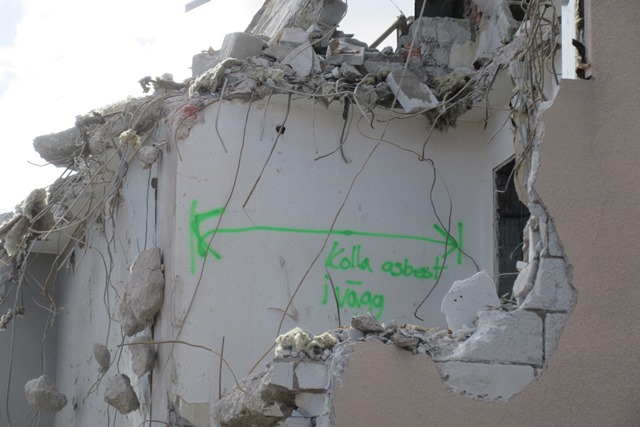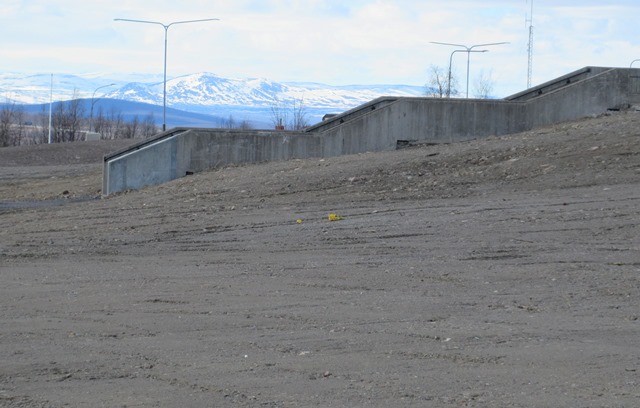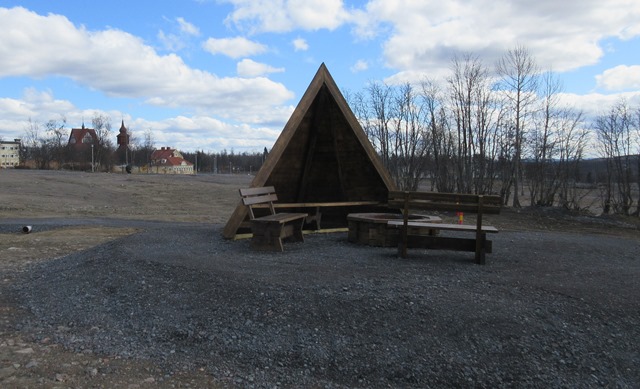At first I was drawn to the devastation, wanting to know what would be knocked down next, and when, and recording changes with photos. Now the battle ground that is old Kiruna town is spread over such a wide area it just makes one feel weary, yet another scene of destruction, yet another lost street. I no longer want to look, or record this and I feel weary.
People living in nearby areas have to cope with seeing the destruction of their past on a daily basis, and I guess they are weary too. A woman recently complained to Rolf that the mining company didn’t seem to care anymore about making the area around this destruction look cared for. When they first began knocking things down they made ‘parks’, put up large pictures to cover dead shop windows, made sculptures out of rubble and added street furniture nearby. Now broken wires, rubble and dust blows around the streets, and all there is to look at are lines of blue fences and digging machines peering over piles of debris. A half torn down building displays the message, ‘check for asbestos here!’ next to protruding cables and shattered brick.


Streets once near the church have become a large mud desert. There’s no attempt at making a park here, though we see they’ve placed a picnic and barbecue facility in the middle of it. Is this a joke? A little further away a run of concrete steps still stands in this desert, connecting nowhere, to nowhere.


Locals are battle-weary. It is perhaps for this reason the Swedish military decided last week it wouldn’t affect Kiruna at all if soldiers carrying guns appeared in residential streets without warning, leaning into houses and backyards as if on the attack. I’m sure the army reasoned that people here are used to living in a war zone.
Later, some Kiruna people interviewed for the Swedish television news indicated they weren’t so weary that they no longer knew what was ‘normal’. ‘Soldiers were running up here with guns near the children’s nursery, and we had no idea who they were or why they were here’, one said in shock and disbelief. It’s very hard to imagine such a thing happening in Stockholm, where you’re still allowed to have expectations of what would be considered normal and safe in your environment.

